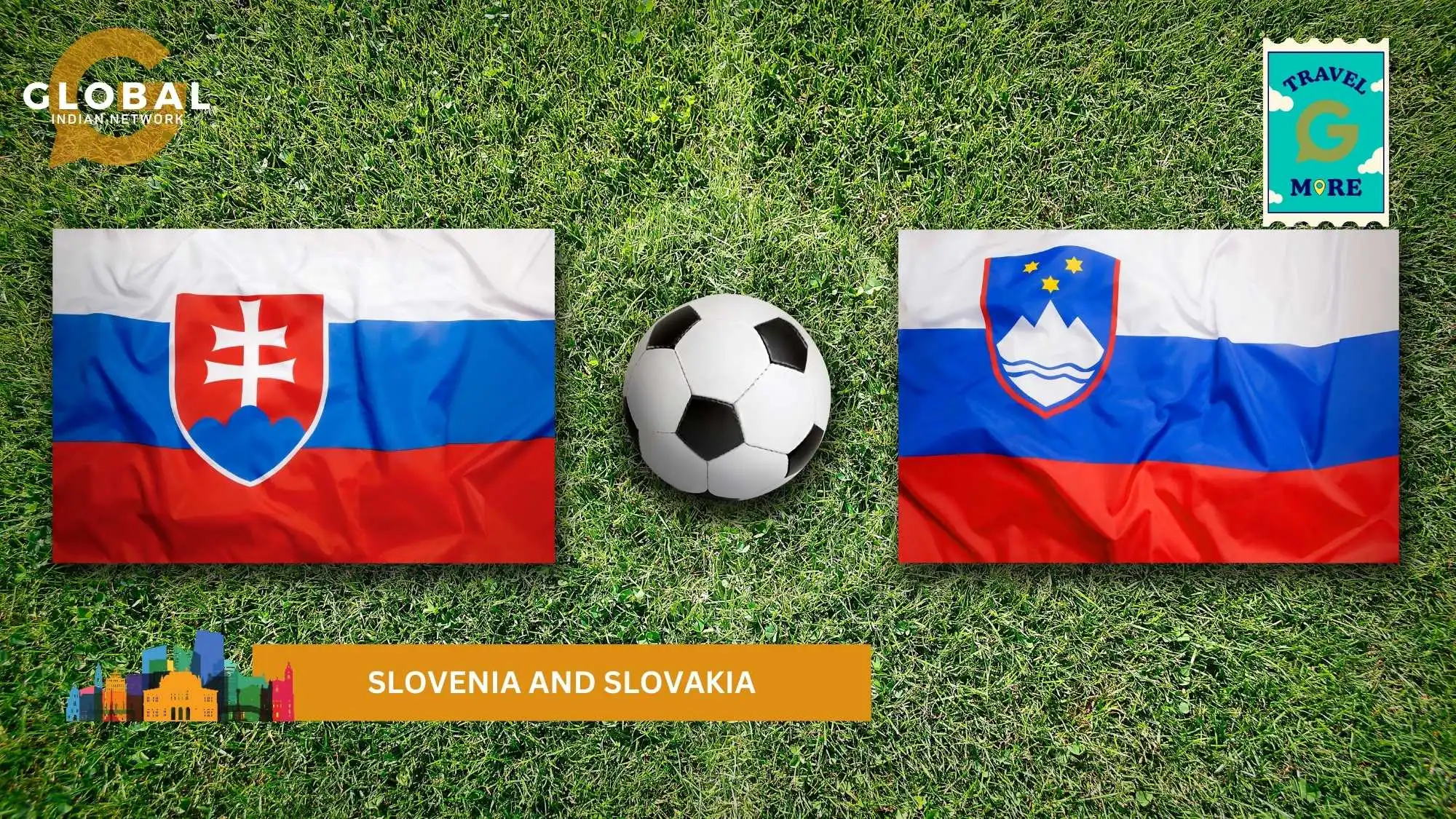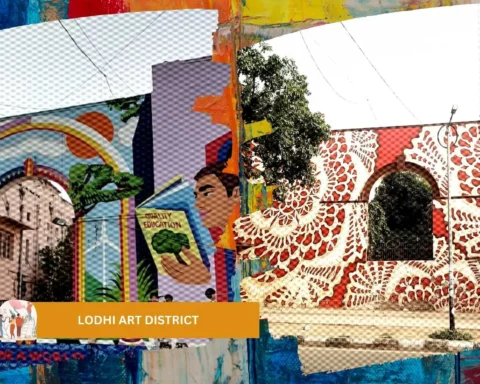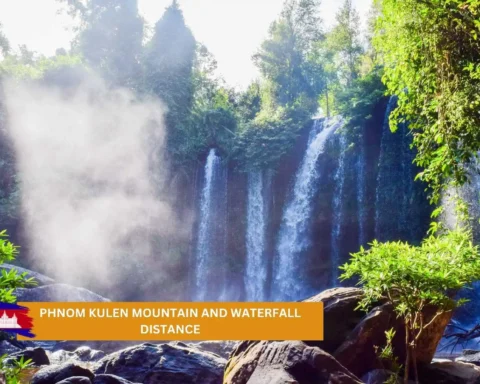When it comes to the diverse tapestry of European countries, it’s not uncommon for Slovenia and Slovakia to be inadvertently interchanged. Nestled in Central Europe, these two countries share more than just a phonetic resemblance in their names. However, delving deeper reveals a mosaic of differences between Slovenia and Slovakia. Let’s embark on a journey of exploration as we unravel the intricacies that set these two nations apart.
Table of Contents
Geographical Differences
Slovenia and Slovakia, although neighbouring countries in Central Europe, showcase notable distinctions in their geographical landscapes. Slovenia is a landlocked country in Central and Southeast Europe, boasting a diverse terrain encompassing the Julian Alps in the northwest, idyllic lakes, and a sliver of the Adriatic coastline in the southwest. The country’s small size is juxtaposed against its varied topography, providing visitors with a mosaic of natural wonders.
On the other hand, Slovakia, positioned slightly in Eastern Europe, features a landscape dominated by the Carpathian Mountains in the north, offering a more rugged and mountainous terrain. The juxtaposition of these geographical features not only influences the countries’ climates but also shapes the character of their regions, creating distinct settings for cultural and outdoor experiences.
Demographic Differences
Beyond the physical landscapes, Slovenia and Slovakia also differ in their demographic compositions. Slovenia, with a population of approximately 2 million, is known for its relatively homogenous society. Most of the population identifies as Slovene, contributing to a cultural cohesion that reflects the nation’s history. Slovakia, with a larger population of around 5 million, presents a more diverse ethnic makeup, including Slovaks, Hungarians, and other minority groups. This diversity is a testament to Slovakia’s historical connections with neighbouring countries. Understanding these demographic differences adds depth to the cultural tapestry of each nation, shaping the dynamics of communities and influencing the overall societal fabric.
Historical Independence Movements
Slovenia and Slovakia, two nations in Central Europe, embarked on distinct historical independence movements in the late 20th century, each navigating a unique path to sovereignty.
Slovenia’s Road to Independence
The journey to independence for Slovenia unfolded against the backdrop of the tumultuous breakup of Yugoslavia in the early 1990s. As the Yugoslav federation began to disintegrate, Slovenia, fueled by a desire for self-determination, declared its independence on June 25, 1991. This declaration triggered a brief but intense conflict with the Yugoslav People’s Army. The ten-day war, known as the Ten-Day War or the Slovenian Independence War, ultimately resulted in Slovenia successfully asserting its autonomy. The international community recognised Slovenia’s independence, solidifying its status as a sovereign nation. This period marked a defining moment in Slovenia’s history, paving the way for establishing its own identity and a trajectory toward economic and political stability.
Slovakia’s Velvet Divorce
In contrast, The Velvet Revolution of 1989 marked a pivotal turning point in Czechoslovakia’s history, ending decades of Communist rule and paving the way for a new era of democracy. The revolution unfolded against the backdrop of sweeping changes in the political landscape of Eastern Europe and the weakening grip of communism across the region. Slovakia’s path to independence took a markedly different route, characterised by a peaceful and negotiated separation from the Czech Republic. The dissolution of Czechoslovakia, often referred to as the Velvet Divorce, occurred on January 1, 1993, marking the establishment of the Slovak Republic.
Unlike the more dramatic secession of Slovenia, the Velvet Divorce was a diplomatic and cooperative process, reflecting a shared recognition of divergent paths for the two nations. The separation was largely amicable, with both Slovakia and the Czech Republic expressing a commitment to fostering good relations despite their newfound independence. Slovakia’s historical ties to Czechoslovakia influenced the nature of its independence movement, emphasising diplomacy and cooperation over conflict. This peaceful transition set the stage for Slovakia’s emergence as an independent and sovereign state on the European stage.
The Warsaw Pact was established in 1955 by the Soviet Union and several other Eastern Bloc socialist republics, including Poland and Czechoslovakia. Slovakia, as a part of Czechoslovakia at that time, was indirectly associated with the Warsaw Pact through its inclusion within the boundaries of Czechoslovakia.
Slovakia’s roots can be traced back to the 9th-century state of Great Moravia, a significant Slavic state that played a crucial role in the early medieval history of Central Europe. The legacy of Great Moravia laid the foundation for the Slovak people’s emergence and cultural identity.
Linguistic Landscape and Cultural Identity
Slovenia and Slovakia, nestled in Central Europe, exhibit diverse linguistic landscapes that mirror their unique cultural identities.
Slovenia
With its rich linguistic and cultural tapestry, Slovenia is distinguished by the Slovenian language, also known as Slovene. As a South Slavic language, Slovenian shares roots with other Slavic languages but maintains a unique identity shaped by historical influences. The language has evolved from medieval Slavic dialects and is integral to Slovenia’s cultural identity. Beyond language, Slovenia’s cultural landscape is characterised by a fusion of Central European, Mediterranean, and Balkan influences. This amalgamation is evident in the country’s traditions, folk music, and vibrant arts scene. The preservation of Slovenian as the official language reflects the nation’s commitment to cultural heritage and serves as a symbol of unity, fostering a sense of identity among the country’s diverse regions.
Slovakia
In Slovakia, the linguistic landscape and cultural identity are shaped by the use of Slovak, a West Slavic language. With its roots in the Slavic linguistic family, Slovak has been a cornerstone of Slovak identity throughout history. The language was pivotal during Czechoslovakia, uniting Slovaks with their Czech counterparts. In the post-Velvet Divorce era, the emphasis on Slovak as the official language became more pronounced, contributing to a distinct cultural identity. Slovakia’s cultural mosaic is coloured by a blend of influences from neighbouring nations, particularly Hungary and the Czech Republic. This interplay of cultures is evident in folk traditions, music, and the arts, creating a unique cultural landscape that reflects the nation’s historical connections and contemporary diversity. In Slovakia, Czech is widely recognised as the best-known foreign language, owing to the historical ties between Slovakia and the Czech Republic during the era of Czechoslovakia.
While both Slovenia and Slovakia share Slavic linguistic roots, the specific branches of South Slavic and West Slavic languages, respectively, contribute to their linguistic distinctiveness. Slovenian’s ties to the broader South Slavic family, including Croatian and Serbian, set it apart from the West Slavic Slovak. Additionally, the historical context of Yugoslavia’s dissolution in the early 1990s and the Velvet Divorce in 1993 played pivotal roles in shaping the linguistic and cultural trajectories of Slovenia and Slovakia, respectively. Despite these linguistic and historical differences, both nations proudly celebrate their languages as integral components of their unique cultural identities, contributing to the rich and diverse tapestry of Central Europe.
Flags and National Symbols
Slovenia and Slovakia, distinct Central European nations, showcase unique flags and national symbols that encapsulate their individual histories and identities.
Slovenia’s Flag
Slovenia’s flag, a tricolour of white, blue, and red horizontal stripes, is a prominent symbol of the nation’s identity. Adopted on June 27, 1991, following Slovenia’s declaration of independence, the flag reflects the country’s natural beauty. The three colours represent the Triglav, the highest peak in the Julian Alps. The coat of arms, centered on the flag’s left side, further emphasises this connection, featuring a stylised depiction of Triglav. This symbology intertwines Slovenia’s geographical features with its national identity, creating a visual representation that resonates with the country’s rich cultural and historical heritage.
Slovakia’s Flag
Slovakia’s national flag, a tricolour of white, blue, and red horizontal bands, is a distinctive emblem of the nation’s identity. Adopted on September 1, 1992, after the peaceful separation from the Czech Republic, the flag echoes historical ties while asserting Slovakia’s independence. The coat of arms, featuring a double cross, is situated on the hoist side of the flag. This double cross, historically linked to the Christian heritage of Slovakia, symbolises the nation’s spiritual and cultural roots. The flag and coat of arms encapsulate Slovakia’s journey to independence and its unique blend of history, culture, and national pride.
Cuisine in Slovenia
Slovenian cuisine reflects a delightful fusion of Central European, Mediterranean, and Balkan influences, creating a diverse and flavorful gastronomic experience. One of Slovenia’s culinary treasures is Potica, a traditional nut roll often enjoyed during festive occasions. Štruklji, rolled dumplings with various fillings, showcase the versatility of Slovenian cuisine. The nation’s proximity to the Adriatic Sea is evident in dishes like seafood-based Brodet, highlighting the Mediterranean influence. Carniolan sausage, a pork sausage flavoured with garlic, is a beloved national dish often served with sauerkraut. Hearty soups, such as Jota, a bean and sauerkraut soup, and Žganci, a cornmeal-based dish, further enrich Slovenia’s culinary identity. Slovenian cuisine’s emphasis on fresh, local ingredients contributes to its authenticity, making every dish a journey through the country’s diverse landscapes and cultural heritage.
Cuisine in Slovakia
Slovakian cuisine, rooted in hearty and comforting traditions, reflects the country’s agricultural heritage and historical influences. Bryndzové Halušky, potato dumplings served with a pungent sheep cheese known as bryndza, stands as one of Slovakia’s national dishes. Kapustnica, a flavorful cabbage soup often prepared during Christmas, showcases the seasonal and festive aspects of Slovakian cuisine. Halušky, similar to gnocchi, are a popular comfort food often served with various toppings, emphasising the versatility of Slovakian dishes. Additionally, Slovakia’s historical connections with Hungary are evident in dishes like goulash, showcasing a blend of spices and flavours. The love for soups continues with Fazuľová Polievka, a bean soup enjoyed throughout the country. Slovakia’s cuisine, with its emphasis on hearty and filling meals, reflects the resilience and warmth of its people, making every dining experience a journey into the heart of Central Europe.
Population Size
Slovenia and Slovakia, neighbouring countries in Central Europe, exhibit differences in population size that contribute to their distinct social landscapes. Slovenia, with a population of around 2 million, is characterised by a relatively smaller and more homogenous society. This size lends itself to a close-knit community, fostering a sense of shared identity among the Slovene people. On the other hand, Slovakia, with a population of approximately 5 million, has a larger and more diverse demographic makeup. This diversity is influenced by historical ties with neighbouring nations, resulting in a tapestry of ethnic backgrounds and cultural influences. The variations in population size contribute to unique social dynamics and cultural expressions in both Slovenia and Slovakia.
Religion
Religious affiliations in Slovenia and Slovakia reflect historical influences and geographical contexts. In Slovenia, most of the population identifies as Roman Catholic, a legacy of the country’s historical ties with the Holy Roman Empire and later the Habsburg Monarchy. The Catholic Church plays a prominent role in Slovenian culture and traditions. While Roman Catholicism is also prevalent in Slovakia, there is a more diverse religious landscape. A notable minority adheres to Protestantism, and historical ties with Hungary have contributed to the presence of the Eastern Orthodox Church. These variations in religious demographics underscore the unique historical paths of Slovenia and Slovakia and their impact on cultural and spiritual practices.
Wines
Slovenia and Slovakia, having rich viticultural traditions, showcase differences in their wine cultures. Slovenia, particularly in Styria and Primorska, is renowned for its high-quality white wines, including the indigenous variety called Rebula. The country’s diverse microclimates and terrains contribute to various wine styles. With its viticultural heritage, Slovakia is known for wines produced in regions such as Tokaj and the Small Carpathians. Influenced by continental climates, Slovakian wines often feature aromatic whites like Grüner Veltliner and Riesling. While both countries share a passion for winemaking, the specific varietals, terroirs, and wine styles contribute to the distinct character of Slovenian and Slovakian wines.
Famous Attractions
The famous attractions in Slovenia and Slovakia showcase the diverse natural landscapes and cultural treasures of these Central European nations. Slovenia’s Lake Bled, with its picturesque setting and medieval castle, captures the imagination of visitors worldwide. The Škocjan Caves, a UNESCO World Heritage site, and the charming coastal town of Piran add to Slovenia’s allure. In Slovakia, the Spiš Castle, one of the largest in Central Europe, stands proudly atop a hill, offering panoramic views. Bratislava Castle, situated along the Danube River, and Bojnice Castle, often regarded as a fairy-tale castle, are among Slovakia’s iconic landmarks. These famous attractions not only draw tourists but also reflect the historical, architectural, and natural richness that distinguishes Slovenia and Slovakia.
Other Differences Between Slovenia and Slovakia
These additional differences underscore the multifaceted nature of the distinctions between Slovenia and Slovakia, encompassing political systems, education, environmental policies, and regional development.
Political Systems and International Relations: Slovenia and Slovakia, having emerged from the dissolution of Czechoslovakia, have adopted distinct political systems and diplomatic stances. Since gaining independence in 1991, Slovenia has followed a parliamentary representative democratic system. It became a member of the European Union in 2004 and the Eurozone in 2007. After the Velvet Divorce in 1993, Slovakia adopted a similar political structure but joined the European Union and the Eurozone slightly later, in 2004 and 2009, respectively. The differences in their political trajectories and international engagements contribute to varied diplomatic and policy approaches.
Education Systems: Slovenia and Slovakia have different education systems, reflecting varying priorities and historical contexts. Slovenia strongly emphasises education, boasting a well-developed system that includes a mix of public and private institutions. The country has a high literacy rate and is known for its research and academic contributions. While investing in education, Slovakia has faced challenges in certain regions, and educational outcomes can vary. The differences in their education systems contribute to distinct approaches to human capital development and innovation.
Environmental Policies and Sustainability: Environmental policies and sustainability practices differ between Slovenia and Slovakia. Slovenia has been recognised for its commitment to environmental protection, sustainable development, and renewable energy. The country emphasises green initiatives and conservation efforts, reflecting its dedication to preserving natural resources. Slovakia, while making progress in environmental policies, has faced challenges in managing industrial pollution and environmental degradation. These differences highlight the varying approaches and priorities in addressing ecological concerns.
Urbanisation and Regional Development: Slovenia and Slovakia exhibit differences in urbanisation and regional development. Slovenia’s capital, Ljubljana, is a vibrant cultural and economic hub, contributing significantly to the country’s overall development. Slovakia’s capital, Bratislava, plays a similar role, but regional disparities in development have been more pronounced. Certain regions in Slovakia have faced challenges in economic development and infrastructure, impacting the overall urban-rural divide. These disparities reflect diverse patterns in regional planning and development strategies.
Conclusion
Among the Central European nations, Slovenia and Slovakia emerge as distinctive threads, each weaving a unique story of identity, resilience, and cultural richness. From their geographical landscapes to the intricacies of language, historical narratives, and symbols, these countries stand as testaments to the diverse mosaic that is Europe. As we unravel the differences between Slovenia and Slovakia, we gain not only a deeper understanding of these nations but also an appreciation for the intricate layers that contribute to their individuality.
FAQs
What is the capital city of Slovakia?
The capital city of Slovakia is Bratislava, situated along the banks of the Danube River. Bratislava serves as the political, cultural, and economic center of the country.
Why do Slovenia and Slovakia have such similar names?
The similarity in names between Slovenia and Slovakia is coincidental and stems from their shared Slavic linguistic roots and historical ties within the former Czechoslovakia. The names reflect their unique identities as separate nations with diverse cultural, historical, and geographical characteristics.
What is Slovenia famous for?
Slovenia is renowned for its stunning natural landscapes, including Lake Bled and the Julian Alps, its rich cultural heritage with medieval castles and charming towns, and its thriving culinary scene, notably featuring wines and traditional dishes like potica.
Do Slovenia and Slovakia share a border?
No, Slovenia and Slovakia do not share a direct border. Austria lies between them, connecting Slovenia to the south and Slovakia to the north. The geographic separation between the two countries is due to their locations in different parts of Central Europe.









